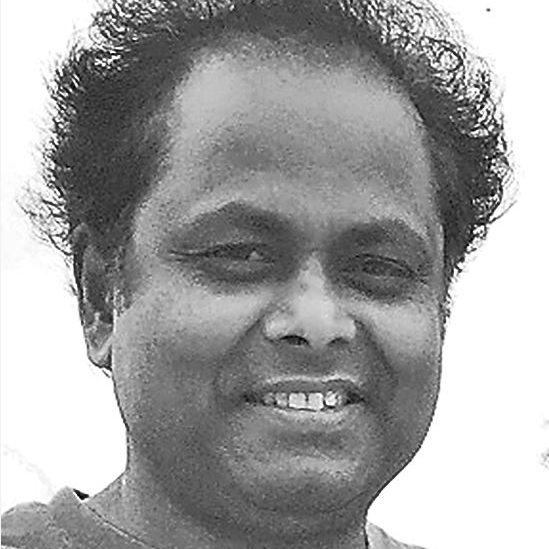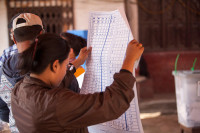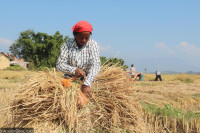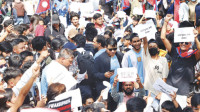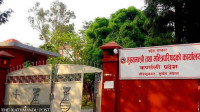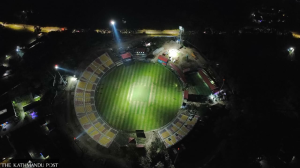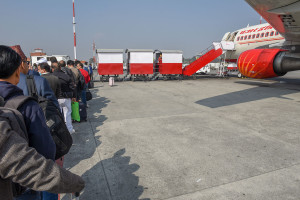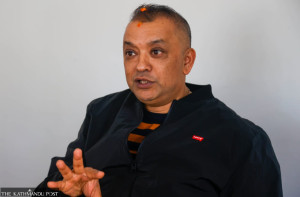Opinion
Practise what you preach
The Art & Literature Festival needs to be more inclusive of the Koch-Rajbanshis
Pramod Mishra
Jhapa has seen two major cultural events this month so far. Art & Literature Festival 2019 was held in Kakarbhitta from March 2-4. It was organised by Readers Jhapa. The other was a grand satsang (spiritual gathering) organised by Nepal Santmat Satsang at Khajurgachi, Gauriganj 6, from March 11-12. If you look at the roster of speakers at the Kakarbhitta festival, you will see that almost all of them were of hill origin (not a single Koch-Rajbanshi among them). And the issues it discussed were worldly, related to literature, free speech and exclusion, critical sense, class awareness, geopolitical reflection, oppression, rebellion, and cultural nationalism. In short, all related to the concerns of society and the state.
On the other hand, the Gauriganj gathering had speakers from the Santmat Satsang organisation situated in Kuppaghat, Bhagalpur, and they were all other worldly swamis, saints of the Santmat tradition established by Maharshi Mehi (1885-1986). Some of the topics they discussed were salvation, ethical, a sin-free and vice-free life, the need for satsang (association with truth and truth seekers), and bhakti (devotion). They spoke much about Sabari, a Dalit woman whose eaten (jutho) fruit Ram ate and whom he accepted as his disciple. And the organisers were almost all Rajbanshis. Even though the organisers spoke Nepali, the master of ceremonies spoke relatively flawless, if a bit rustic, Hindi; and the swamis all spoke Hindi with various accents and (class-education) flavours.
Despite these stark differences, representing two different provenances of various kinds, one could see similarities as well. Both advocated ethical living, warned of social and personal moral deterioration, even though the former designated the state and its power as the potential sources of threat and the latter the innate nature of human desire. In this sense, one complemented the other. Yet, I wonder why is it that the Rajbanshis of Jhapa and Morang staged such a huge public display of spirituality that must have required quite a bit of organising skill and resources. The last time they organised such a festival was in 1996, the year the Maoists started their insurgency. Between then and now, much water has passed under the bridge in the Nepali political and cultural landscape. Jhapa has come to organise Nepal’s top-notch intellectual festival regularly (this was their fourth edition); but the Rajbanshis have once again staged the same spiritual public performance after 23 years.
In my view, given what has happened to their culture and economic status over the past decades, this was a way for the Rajbanshis to demonstrate their organisational capacity and their moral and social equality with the dominant cultural and political formation in what was their linguistic, economic and cultural region not long ago.
Let me now explain what I mean by moral and social equality if not superiority. Santmat Satsang of Maharshi Mehi Das became an established spiritual sect in the second half of the 20th century. By the 1960s and 1970s, its charismatic leader Maharshi Mehi had made converts in the border areas of Purnia and Saharsha districts, among other places, especially among the so-called lower castes and tribes by invoking the Bhakti teachings of the Bhakti saints, such as Kabir, Tulsi, Mira, and Raidas; and preaching spiritual equality of all. In my childhood, some prominent Rajbanshis of my village and surrounding areas in Morang had converted and became disciples of Mehi Das. In Sungha village, they built a Satsang Ashram of white-washed brick and cement, an unheard of thing miles and miles around. These disciples had donated many bighas of land to the Ashram (in Khajurgachi, Jhapa, Sona Lal Rajbanshi gifted 6 bighas).
Among these disciples was my maternal uncle (the brother of my mother’s bhaya, ritual friend), Sampat Lal Rajbanshi. Every year, my mother and I made a trek to Sampat Mama’s house for a few days and attended the annual Satsang sermons. That’s where I first saw Maharshi Mehi. And this is where I learned my first lessons of sadachar, good conduct: ‘Jhooth, chori, hinsa, nasaa, byabhichar tajana chahiye’ (Quit lies, larceny, violence, intoxication, and corruption). I am sure I fell far short of these tenets in my life, but I did continue my association with Santmat Satsang for many years. When I went to college on the banks of the Ganges, I frequently traversed the miles from my hostel to the other side of town to Maharshi Mehi’s headquarters at Kuppaghat overlooking the Ganges.
My first lessons of Hinduism’s diverse paths leading to the same goal also comes from the sermons I heard at my Sampat Mama’s village. In time, there came Dal Bahadur Maharaj to reside in the Ashram at my uncle’s village. They said he was a Damai by caste, but the devotees who came to listen to him and revere him made no difference whether he was a Damai or a Shrotri Brahmin. When we heard of king Mahendra’s death in January 1972 on the radio, Dal Bahadur Baba was giving his sermon in my village. He abruptly ended the sermon and returned to his Ashram because national mourning had begun. He lived in the Ashram all his life, and now his samadhi is in its premises. I heard the swamis at Gauriganj Satsang call him Maharshi, the highest honorific in the organisation.
Like the eclecticism of the sources of this organisation, Santmat Satsang at Gauriganj conducted itself in multiple languages. The organisers spoke Nepali, the swamis gave sermons in Hindi, and the Rajbanshis spoke Rajbanshi. Swamis were dressed in their saffron garb, the master of ceremonies was dressed in dhoti-kurta, some organisers were in shirt-pants, others in dhotis. And the audience came in all varieties locally available. There you have it—the eclecticism of faith, speech and attire.
In this sense, there is not much difference between the Kakarbhitta festival and Gauriganj Satsang—both advocate diversity—one against the monocultural state, the other against a single prophet and his monotheistic God. Yet, the Kakarbhitta festival has yet to be more inclusive of the Rajbanshis because it was all conducted in Nepali by mostly people of hill origin, whereas the organisers of Gauriganj Satsang spoke Nepali with the media. The Rajbanshis of Jhapa and Morang need to be more assertive and worldly; the Kakarbhitta festival needs to be more inclusive of the Koch-Rajbanshis. That’s my hope.
Mishra is the department chair of English Studies at Lewis University in the United States.




 15.12°C Kathmandu
15.12°C Kathmandu